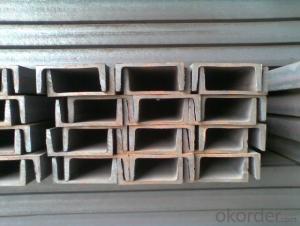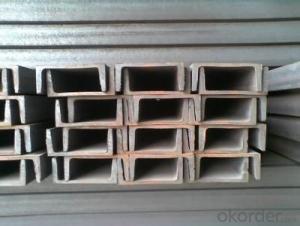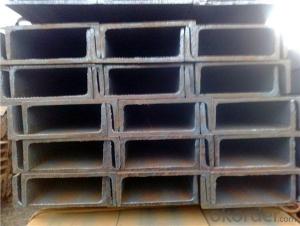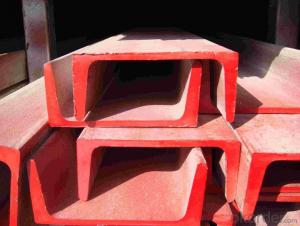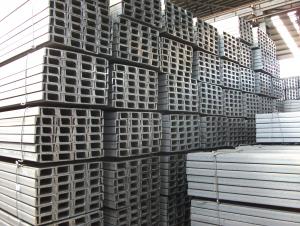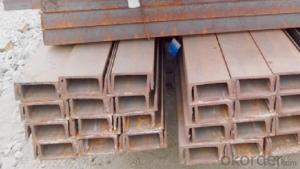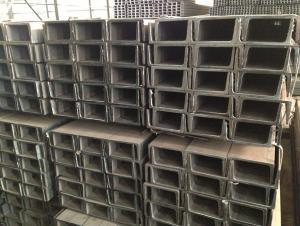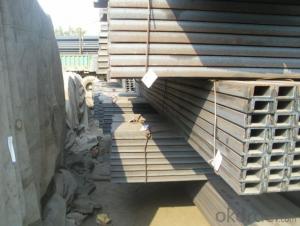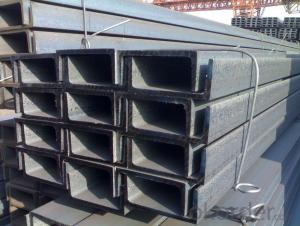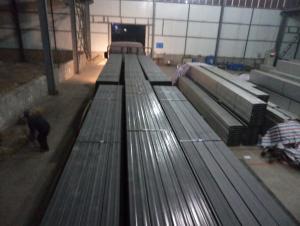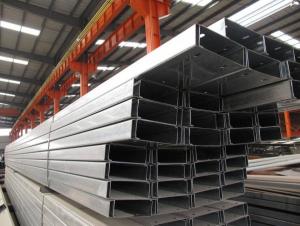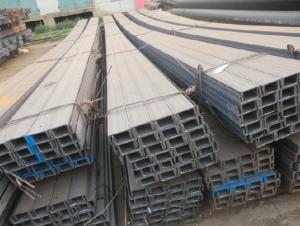Galvanized Steel Channel Model of Q195,Q235
- Loading Port:
- Tianjin
- Payment Terms:
- TT OR LC
- Min Order Qty:
- 2000 PCS
- Supply Capability:
- 40000 PCS/month
OKorder Service Pledge
OKorder Financial Service
You Might Also Like
Galvanized Steelrigid U Channel Specification
Material:carbon steel,Q195,Q235
Finish: pre-galvanzied or hot dipped galvanized
Dimensions: 41x41mm,41x21mm
Thickness: 1.5mm~3mm
Length: 3mtr, this can be adjusted according to your own requested.
Type: Slotted or Plain type, the slots size and location can be in your drawing paper to manufacture.
Packaging & Delivery
| Packaging Detail: | packed in 50 pieces per bundle. this quantity can be adjusted according to your own requested. |
| Delivery Detail: | 15~20 days |
Galvanized Steelrigid U Channel Performance:
convenient in construction and save much time and labor.
light and cheap.
high mechanical strength.
various kinds of fittings can make up of many combinations also for sale
attractive in appearance.
length of the product can be manufactured according to customers' requirement
Galvanized Steelrigid U Channel Pictures


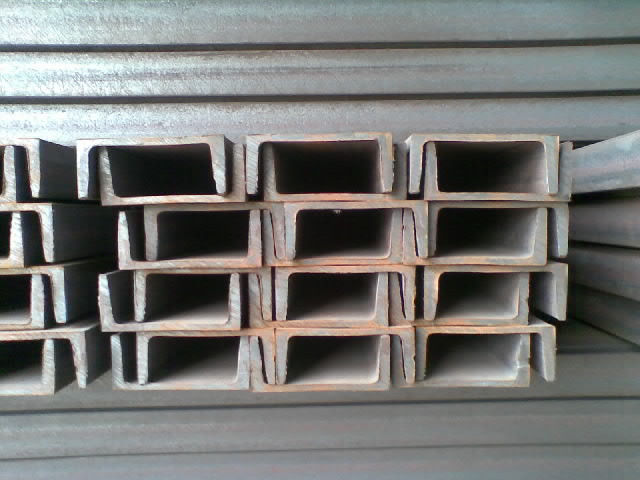
- Q: How are steel channels protected against rust and corrosion?
- Steel channels can be protected against rust and corrosion through a variety of methods. One common method is through the use of coatings. These coatings can be applied to the surface of the steel channel to create a barrier between the metal and the surrounding environment. Examples of coatings include paint, epoxy, or galvanized coatings. Paint coatings provide a protective layer by preventing direct contact between the steel and oxygen, moisture, or other corrosive elements in the atmosphere. Epoxy coatings, on the other hand, are highly resistant to chemicals and provide excellent protection against corrosion. Galvanized coatings involve the application of a layer of zinc to the steel channel, which acts as a sacrificial layer, corroding in place of the steel. Another method to protect steel channels from rust and corrosion is through the process of electroplating. This involves the deposition of a thin layer of metal, such as zinc or chromium, onto the surface of the steel channel through an electrochemical process. The metal layer serves as a barrier against corrosive elements, preventing them from reaching the steel. Additionally, steel channels can be protected by using corrosion inhibitors. Corrosion inhibitors are chemicals that can be added to the environment surrounding the steel channel, such as in the form of coatings or through the use of inhibitors in the water used for cooling or other processes. These inhibitors work by forming a protective layer on the surface of the steel, preventing corrosion from occurring. Regular maintenance and cleaning are also important in preventing rust and corrosion on steel channels. Any accumulated dirt, dust, or other contaminants should be removed promptly, as they can trap moisture against the steel surface and accelerate corrosion. Inspecting the steel channels periodically and addressing any signs of damage or corrosion immediately can also help prevent further deterioration. Overall, a combination of coatings, electroplating, corrosion inhibitors, and proper maintenance practices can effectively protect steel channels against rust and corrosion, extending their lifespan and ensuring their structural integrity.
- Q: What are the different methods of painting steel channels?
- There are several methods of painting steel channels, including spray painting, brush painting, and electrostatic painting. Spray painting is a common method that involves using a spray gun to evenly coat the surface of the steel channel with paint. Brush painting involves manually applying paint with a brush, which allows for more control and precision in smaller areas. Electrostatic painting is a technique where the paint is positively charged and the steel channel is grounded, resulting in a highly efficient and even coat of paint.
- Q: Can steel channels support electrical wiring?
- Yes, steel channels can support electrical wiring. Steel channels are commonly used in construction and electrical applications to provide structural support and protection for electrical wiring. They are often installed along walls, ceilings, or floors to conceal and protect electrical cables. Steel channels are durable and can withstand the weight of electrical wiring, ensuring that the wiring remains secure and protected. Additionally, steel channels can be easily installed and provide a clean and organized solution for routing electrical wiring.
- Q: What is the maximum length of steel channels available?
- The maximum length of steel channels may differ based on the manufacturer and the specific type of steel channel. Typically, steel channels come in standard lengths that range from 20 feet (6.1 meters) to 40 feet (12.2 meters). While certain manufacturers may provide customized lengths that exceed these standard sizes, it is crucial to acknowledge that longer lengths might necessitate special handling and transportation arrangements.
- Q: How do steel channels contribute to the stability of cantilevered structures?
- Steel channels contribute to the stability of cantilevered structures by providing additional support and reinforcement. They are typically used as beams or braces along the length of the cantilever, helping to distribute the load and resist bending and twisting forces. The channels' strength and rigidity enhance the overall structural integrity, preventing excessive deflection and ensuring the stability of the cantilevered structure.
- Q: Can steel channels be used in water treatment plants?
- Indeed, water treatment plants can make use of steel channels. The utilization of steel in water treatment plants is widespread owing to its resilience, robustness, and resistance to corrosion. Steel channels can serve multiple functions such as equipment support, walkway creation, and provision of structural support for pipelines and conduits. Nevertheless, it is crucial to take into account the precise requirements and conditions of the water treatment plant, including the type of water being treated and any potential chemical or environmental factors that could impact the steel channels. Applying a suitable coating or protection may be necessary to prevent corrosion and ensure the prolonged lifespan of the steel channels in the water treatment plant setting.
- Q: What are the different methods of joining steel channels together?
- Steel channels can be joined together using various methods, each with its own advantages and limitations. Welding is a commonly used technique that involves melting and fusing the edges of the channels. While it creates a strong and durable joint, it requires skilled welders and specialized equipment. Welding techniques, such as arc welding, MIG welding, TIG welding, or spot welding, can be employed depending on the specific requirements. Alternatively, bolting can be used by connecting the channels using bolts and nuts. This method is relatively simple and allows for easy disassembly and adjustments, making it suitable for applications that require flexibility. However, it may not offer the same level of strength as welding, and additional reinforcement might be necessary in high-stress situations. Riveting is another option, which involves using metal fasteners called rivets to join the channels. Although it has been widely used in the past, it is less common nowadays due to the availability of more efficient joining techniques. Riveting can provide a strong joint, but it requires special tools and skills for proper installation. Adhesive bonding is a method that utilizes specialized adhesives to join the channels together. It offers several advantages, including non-invasiveness, a smooth finish, and even stress distribution across the joint. Adhesive bonding can be a suitable option when other methods are impractical or undesirable. Ultimately, the choice of joining method for steel channels depends on factors such as application requirements, desired strength and durability, available resources, and the expertise of personnel involved. Careful evaluation of these factors and consultation with professionals is crucial for determining the most appropriate method for a specific project.
- Q: What's the size of channel 16, please? Thank you!
- 16# channel steel GB, A, B two kinds: 16#A trough, 16#B trough said. Specific specifications are: 16#A:, 160*63**6.5 adjustment, rice weighing 17.24KG, 16#B:160*65*8.5 adjustment, rice weighing 19.752KG
- Q: British standard I-beam 203*203*46 size
- The use of ordinary I-beam is equivalent to HN steel;The I-beam whether ordinary or light, because the section size are relatively high and narrow, so the moment of inertia of section two of the spindle is larger, so it only can be directly used in the web plane bending member or the composition of lattice stress components. It is not suitable for the axial compression member or the bent member perpendicular to the web plane, which has great limitations in its application.
- Q: How are steel channels used in the construction of bridges?
- Steel channels are widely used in the construction of bridges due to their strength and versatility. These channels, also known as C-channels or C-sections, are structural components that are shaped like a "C" and have a cross-section resembling a rectangle with flanges on either side. In bridge construction, steel channels are utilized in various ways. Firstly, they are commonly used as beams or girders, providing support and load-bearing capacity for the bridge. Steel channels can be arranged in parallel or in a lattice-like pattern to form the bridge's main framework. The flanges of the channels help distribute the weight of the bridge evenly, ensuring structural stability. Furthermore, steel channels are often employed as braces or struts in bridge construction. They help resist lateral forces such as wind or earthquakes, preventing the bridge from swaying or collapsing. By strategically placing steel channels at key points along the bridge, engineers can enhance its overall strength and durability. Additionally, steel channels are utilized as purlins or trusses in the construction of bridge decks. They provide support for the bridge's concrete or steel deck, ensuring it can withstand the weight of vehicles and pedestrians. Steel channels are also used in the construction of railings and guardrails, providing safety features for users of the bridge. The use of steel channels in bridge construction offers numerous advantages. Steel is known for its high strength-to-weight ratio, making it ideal for building bridges that need to support heavy loads. It is also highly durable, resistant to corrosion, and can withstand harsh environmental conditions. Moreover, steel channels can be easily fabricated and assembled, allowing for efficient construction processes. In conclusion, steel channels play a crucial role in the construction of bridges. They provide structural support, resist lateral forces, and enhance the overall strength and durability of the bridge. With their versatility and numerous advantages, steel channels are an essential component in creating safe and reliable bridges.
Send your message to us
Galvanized Steel Channel Model of Q195,Q235
- Loading Port:
- Tianjin
- Payment Terms:
- TT OR LC
- Min Order Qty:
- 2000 PCS
- Supply Capability:
- 40000 PCS/month
OKorder Service Pledge
OKorder Financial Service
Similar products
Hot products
Hot Searches
Related keywords
